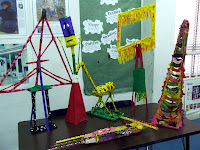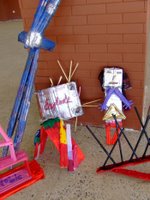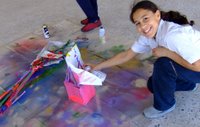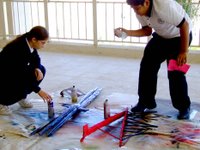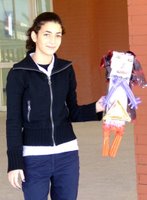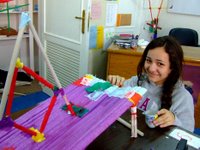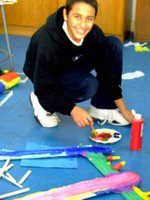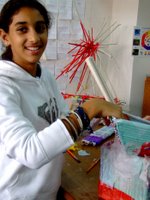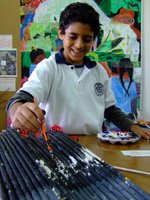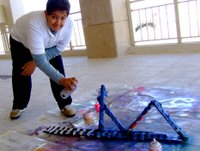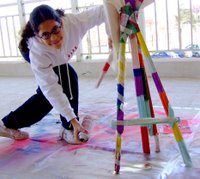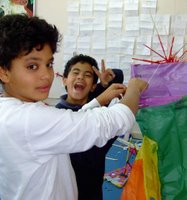
After seeing work displayed in the halls and talking with other middle school teachers, we agreed that students could use some lessons centered around improving their poster presentation skills. I became really excited with all the directions this could take, and decided to incorporate some art cultural information into this on-going assignment.
My main goal was that students develop skills that would help them create attractive, organized, creative visual presentations for any classroom assignment.

The project required that each student research an area of the world (using a fun game, the locations were randomly chosen from a map) and then as a class we would create posters, step-by-step.

Briefly, the steps were as follows (each step had it's own deadline and grade):
1. Determine a color scheme based on some aspect of your research.
2. Create a bold, cut-paper title for your poster, by tracing a provided font.
3. Print out examples of artwork from your area of the world and create a "frame" for each.
4. Sketch a rough layout that incorporates the images and the title (remember our discussions on balance, emphasis, scale, repetition, etc.)
5. Create a large "Symbol" that will be a main element of the poster.

6. Revise your sketch, updating images and title if necessary and including the symbol into your poster layout.
7. Layout all elements of the poster, revise the arrangement if necessary, and begin the final step of gluing (using the discussed gluing methods).
8. Present your poster to the class (peer and self-evaluation).
Being that this was the first time I had attempted this lesson, there were glaring bumps along the way (mainly having to do with initial research, logistics of computer lab use, not

enough time for certain steps of the project) but overall the project was extremely successful!
I was flattered to hear that a high school TOK class used our poster display to discuss "what is art" and why certain art might come from a specific area.
About a week after the project was due, I had an 8th grader approach me in the hall with a big grin, "Ms. Maxwell, I used some of our poster ideas for my Science project..." Music to my ears! Mission accomplished!












